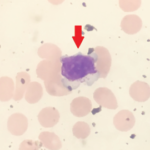(Reuters Health)—About three in five older men with tiny spinal fractures related to osteoporosis reported new or worsening back pain in a new study.
Only about one-quarter of new vertebral fractures are diagnosed by a doctor, the study team writes in their September 7 online report in Journal of Bone and Mineral Research, though the fractures may be a source of unexplained back pain.
Preventing these fractures could reduce back pain and related disability in older men, the authors conclude.
“Even when spine fractures are not recognized or diagnosed by a clinician, they still may cause new or worsening back pain and disability in some patients,” lead author Dr. Howard Fink, a researcher at the Veterans Affairs Health Center in Minneapolis, told Reuters Health by email.
Vertebral fractures are a common problem in older adults with osteoporosis. However, most research has been done on older women, and the current study is the first of its kind to focus on older men, the study team notes.
The researchers examined data from about 4,400 men who were over age 65 when they enrolled in the Osteoporotic Fractures in Men study between 2000 and 2002. The men lived in one of six cities: Minneapolis, Pittsburgh, Portland, San Diego, Birmingham, Alabama and Palo Alto, California.
Each participant filled out back-pain symptom questionnaires at the beginning of the study and again about four and a half years later. In addition, each man had X-rays of the middle and lower back at the start, and again at the follow-up.
A total of 28 men were diagnosed with vertebral fractures by their own physicians during the follow-up. However, X-rays taken at the end of the study period showed an additional 169 men had new vertebral fractures that had not been diagnosed.
The study team found that 70% of men with undiagnosed vertebral fractures reported back pain compared to 59% of men with no vertebral fractures. About 93% of the men who had their fractures diagnosed during the study also reported back pain.
“Back pain is the most common symptom (of vertebral fractures),” Fink said.
It may be important to note the men in the study who had the undetected fractures tended to be older, have poorer health status and often had a history of vertebral fractures.
“This study demonstrates similar findings to that in elderly women, albeit at a lower prevalence. This is consistent with findings that men have a lower prevalence of osteoporosis than elderly women,” Dr. Aaron Buckland, director of research at New York University Langone’s Spine Center in New York City, told Reuters Health in an email.

